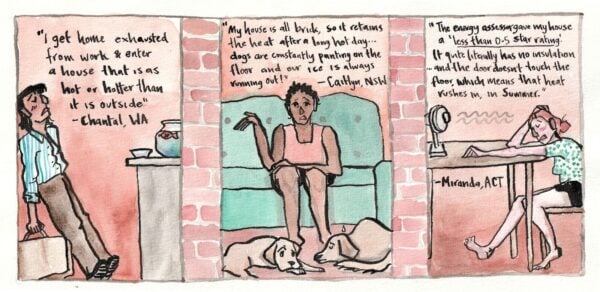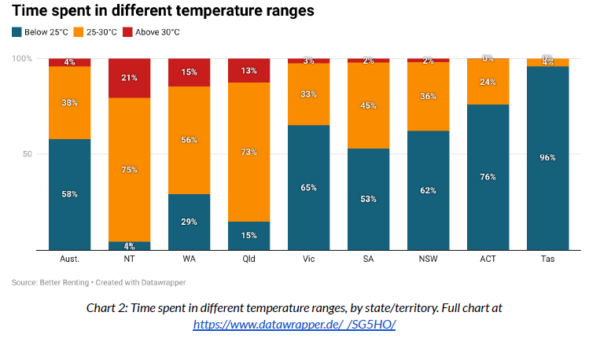ADVOCACY: ‘Renter Researchers’ findings are frightening!
Renter Researchers as a part of the Healthy Homes for Renters campaign have been tracking the temperature of their homes across winter and summer in 2022

Drawing capturing Renter Researcher stories
Two Renter Researcher reports from Better Renting were released this year, with the Hot Homes report being released in March and Cold and Costly in August.
By tracking and collating the minute-by-minute temperature data in rental homes across the country, the reports capture and reveal the scary reality of many people’s living environments. These findings make the real health benefits that exist for renters tangible, especially children and the elderly.
By seeing this data and reading renters stories, it is pretty clear this campaign and platform is absolutely necessary to improve the standard of rental housing across the board to ensure people live in safe and healthy environments.
Hot Homes (march 2022) report overview
The ‘Summer Renter Researches’ findings recruited 50 renters from across Australia for the period 1 December 2021 to 22 February 2022. Each renter tracked the winter temperatures in their homes using smart thermometers (Govee H5075) that track temperature and humidity at one-minute intervals. Participants also contributed qualitative data through surveys, phone interviews, webinars, and digital chat groups.
“Exposure to heat is linked with adverse health outcomes, even for moderate temperatures below 30°C… There is already evidence from every continent of increased heat-related mortality due to climate change(12)”

The table shows time spent in temperature ranges across the country
Cold and Costly (August 2022) report overview
The ‘Winter Renter Researchers’ findings recruited over 70 renters from across Australia for the period of June 13 to July 31 (7 weeks). Some researchers also received a HOBO MX2201 outdoor tracker to allow comparison between indoor and outdoor temperatures
Temperature Findings
The WHO recommends 18°C as the minimum healthy indoor temperature. Yet across Researchers’ homes, temperatures were below this minimum 75% of the time, or just over 18 hours a day. On 21 July, a Researcher in Tasmania recorded an indoor temperature of 0.2°C.
Humidity Findings
Alongside temperature, relative humidity (RH) also has implications for human health. The healthiest RH range is 40-60%. RH above 70% encourages condensation and thus dampness and mould.

The table shows winter temperature and humidity findings across the country
We urge you to check out both reports for further quantitative and qualitative data from the winter and summer findings at the links above.









